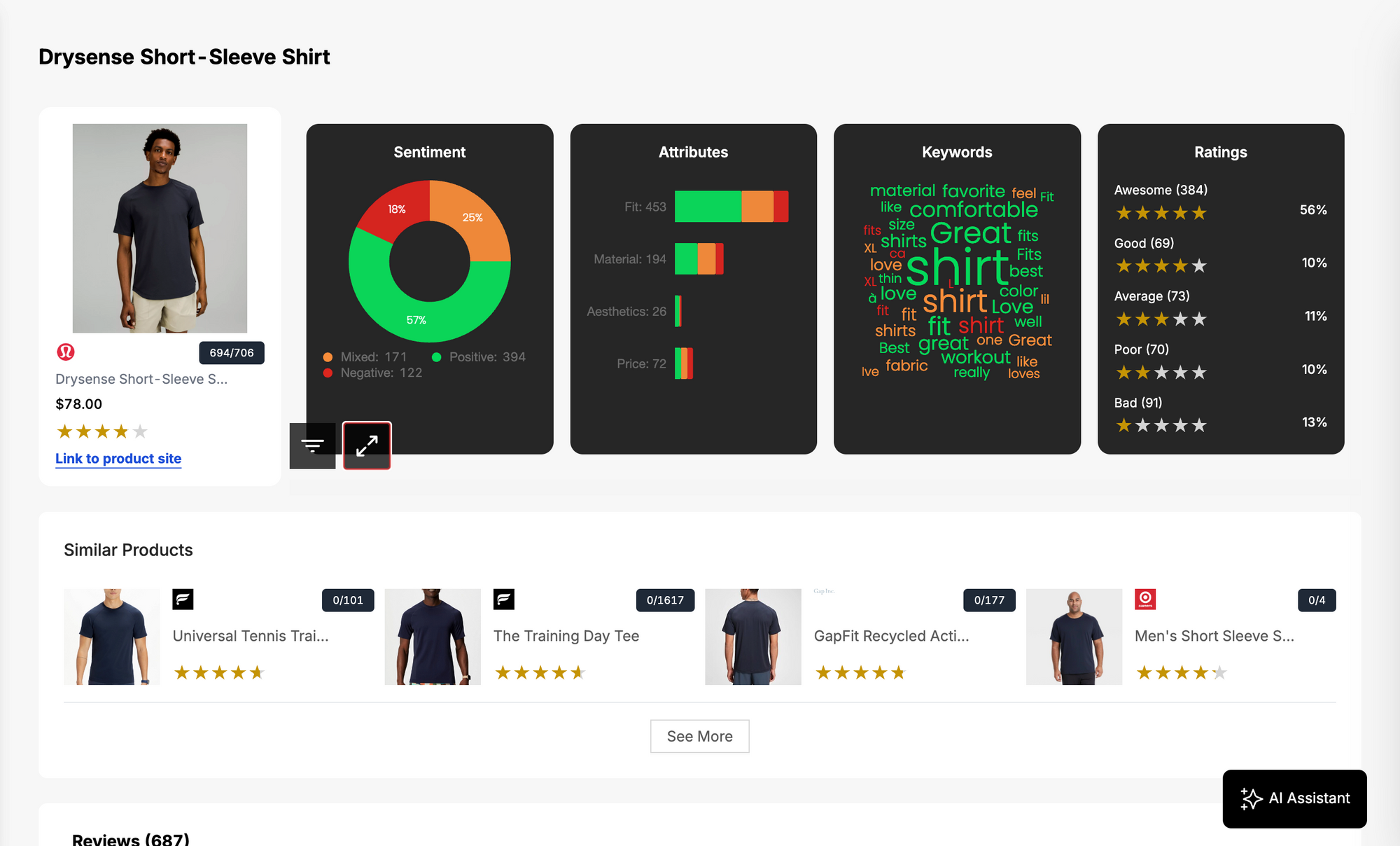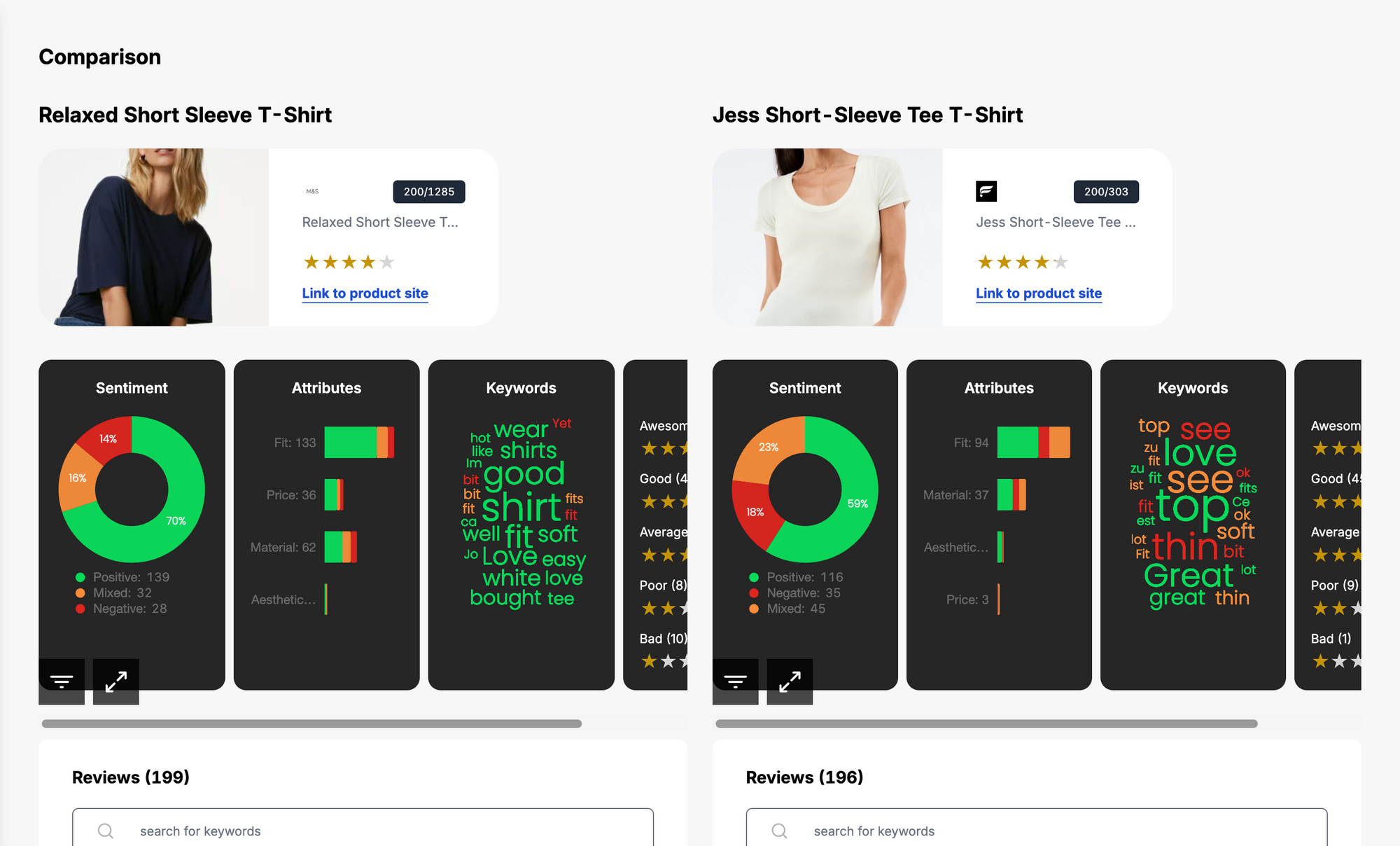Important Questions You Can Answer With Customer Review Analysis
Analyzing customer reviews can provide valuable insights that answer a range of important questions about a product, brand, or overall customer experience. Here are some key questions that can be answered through customer review analysis:

Analyzing customer reviews can provide valuable insights that answer a range of important questions about a product, brand, or overall customer experience. Here are some key questions that can be answered through customer review analysis:
1. What Are Customers' Overall Impressions?
Understanding the overall sentiment of customer reviews provides a foundational insight into how customers perceive a product or brand. By analysing sentiment, whether reviews are positive, negative, or neutral brands can gauge the overall satisfaction level of their customers.
This information helps in assessing the success of product launches, identifying areas for improvement, and shaping future marketing strategies. Sentiment analysis tools can quantify and categorise sentiments, allowing brands to track changes over time and respond to evolving customer opinions.
2. What Do Customers Like Most About the Product?
Positive reviews often contain specific details about what customers appreciate in a product. Analyzing these sentiments helps brands identify the standout features, qualities, or benefits that resonate most with their customers.
This insight guides marketing efforts, allowing brands to highlight the most compelling aspects in their campaigns. Additionally, understanding what customers value can guide product development, ensuring that these favoured features are maintained or enhanced in future iterations.

3. What Are the Common Pain Points?
Negative reviews provide an opportunity for brands to uncover pain points that customers encounter. By analysing these reviews, brands can identify recurring issues such as sizing problems, quality concerns, or challenges with customer service.
Addressing these pain points directly enhances customer satisfaction, reduces returns or complaints, and demonstrates a commitment to improving the customer experience. Brands can prioritise addressing these issues to prevent them from becoming persistent problems.
4. How Does the Product Perform Compared to Expectations?
Comparing customer expectations to their actual experiences is vital for understanding the alignment between marketing messages and the delivered product. Analysing reviews that explicitly mention expectations helps brands identify instances where customers felt pleasantly surprised or disappointed.
This information aids in refining marketing communication and setting more accurate expectations for potential customers. It also highlights areas where products may need adjustments to better meet customer expectations.
5. How Does Customer Feedback Vary by Demographics?
Different customer segments may have varying preferences and expectations. Analysing reviews based on demographics such as age, gender, location, or purchasing behaviour can reveal patterns in sentiment. For example, younger customers might value trendy designs, while older customers may prioritise comfort and durability.
Understanding these demographic variations allows brands to tailor products and messaging to specific segments, enhancing relevance and appeal
6. What are our competitors doing better?
Customer review analysis plays a pivotal role in competitor research, offering valuable insights that illuminate competitors' strengths, weaknesses, and customer perceptions. This analytical process unfolds multifaceted advantages:One fundamental facet is benchmarking – the ability to compare one's own products or services against competitors based on sentiment, themes, and customer feedback.
This aids in pinpointing areas of excellence in competitors' offerings and underscores unique selling points that distinguish one's own brand. Another significant advantage is the identification of competitive advantages through the examination of customer reviews of rivals' products. These insights can spark strategies that harness distinctive features and set products apart in the market.

7. What Opportunities Lie In The Market?
Customer review analysis unveils gaps in the market through negative feedback on competitors' products. These gaps present opportunities for addressing pain points and delivering solutions that cater to unmet customer needs. By assessing reviews across multiple competitors, one can gain insights into broader customer preferences within the industry, shaping tailored product offerings.
The insights from competitor reviews can even fuel product development by providing inspiration and understanding into what customers appreciate or dislike. Moreover, these insights fine-tune marketing strategies, capitalise on customer sentiment, and assist in spotting trends and shifts in preferences over time. From influencer collaborations to addressing common pain points and fostering customer loyalty, review analysis ensures a responsive and strategic approach.
Conclusion
Ultimately, the holistic impact of customer review analysis on competitor research empowers brands to refine strategies, amplify differentiation, and curate offerings that genuinely resonate with customers.Customer review analysis offers actionable insights that guide product development, marketing strategies, and overall customer experience enhancement.
By answering questions related to sentiment, preferences, pain points, expectations, and demographic variations, brands can make data-driven decisions that resonate with their target audience, foster loyalty, and drive continuous improvement. Leveraging these insights empowers brands to create products that truly meet customer needs and exceed their expectations.

